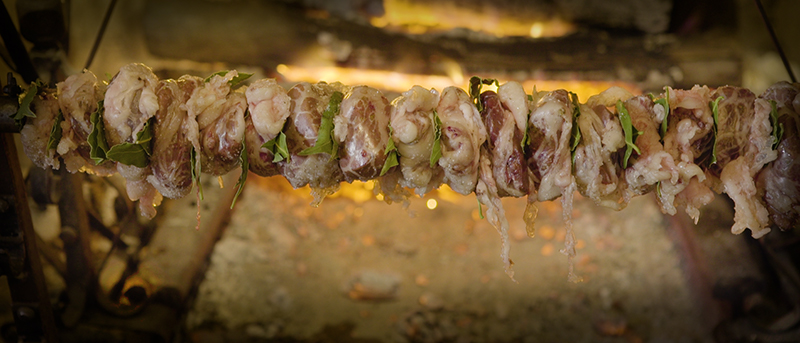
Spezzatura di maiale: nose to tail in action
After living in Tuscany for six years we were lucky enough to be invited to one of the most storied family events in Italy—the spezzatura di maiale—or the dividing of the pig. This tradition of using all parts of the pig has inspired chefs from Fergus Henderson of St. John in London—whose restaurants and cookbooks have popularized the idea of “nose to tail”—to Samin Nosrat, who filmed a pig being butchered in Italy for her cooking series “Salt, Fat, Acid, Heat.” An invitation to spezzatura di maiale offered the chance to go deeper than the popular coverage to see what this tradition is like in a family setting, as it has been done for generations.
For the majority of people in Italy, for hundreds of years, raising a pig was everything. I’ve learned that the ideas we have about the bounty of the Italian countryside are largely a modern construct. For most of history everyone but the aristocracy was barely getting by. Many of the oldest generation still living were raised in conditions of near-starvation because of Mussolini’s agricultural policies—for many years in the 1900s even plain pasta was a luxury. It was difficult to raise a pig to maturity because it required enough excess food to feed it. If at all possible, people raised two, one for their own use and one for the doctor. A kind of early medical insurance.
The pig is slaughtered in the winter because it is colder—the whole world becomes a refrigerator. A day or so after the pig is killed the spezzatura happens, which is a full day of work for four men (this seems to be an almost exclusively male task). Since the middle ages there have been butchers, called norcini, who traveled from town to town during the winter to do the spezzatura. Their skill with knives also made them the default surgeons and dentists.
After the intricate and precise work of cutting up the pig and making sausage, pancetta, salumi, prosciutto, and other things pork, there is a feast shared with friends and neighbors. When other families kill their pig it is their turn to host the festa. According to the family we joined this tradition has been largely unchanged during their lives, and it provides an opportunity to have some favorite foods, which are only available on this day.

We had no idea what to expect, and being a morally conflicted meat eater, I braced myself to be unnerved. But there was something about the atmosphere—the complete focus and attention of the men, the immaculate room, and the use of nearly every last part of the pig—that left me with feeling more of deep respect for the animal than anything else. This is an event that is not taken lightly. Very little of the meat is consumed fresh. The majority is preserved for use throughout the coming year. At the end of the day there were a couple of bones left, and that was it. Organs, skin, fat, cartilage … everything else was carefully used.
A bonus is that a breed of pig that was endangered, the Tuscan cinta senese, is now safely off the endangered list and thriving, because so many small farms, including this family, are raising them.






No Comments